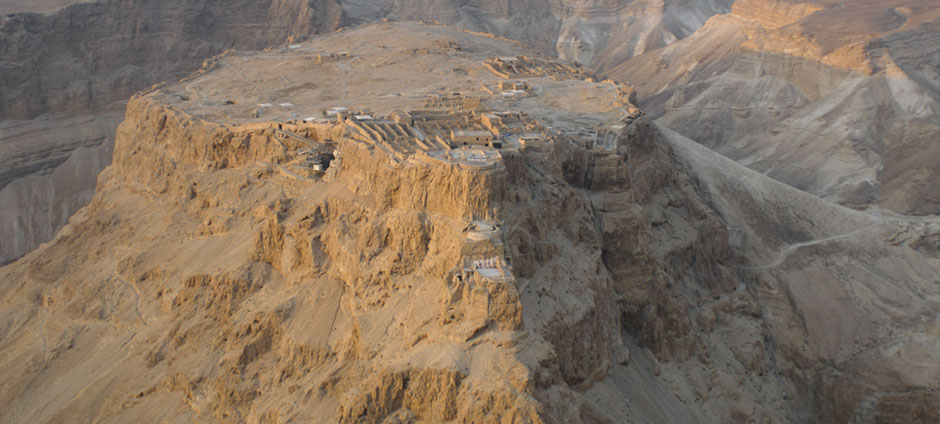
The fortress of Masada was built in the year 30 BCE by King Herod, whose architectural feats have left their mark throughout the country. At the beginning of the great revolt against Rome in the year 68 BCE, the site was conquered by a group of Jewish zealots, and Masada became their last stronghold.
Masada relates a story of perseverance and power, faith and surrender, ambitions, and a tragic end. Masada is a place where battles were waged with rocks and flaming arrows, as well as battles of the human spirit.
In the year 72 the Romans besieged Masada and succeeded in reaching the steep fortress after constructing a huge earthen ramp on its western side. In the year 73, the 960 Jewish zealots living at the top of Masada chose to commit suicide rather than to fall into the hands of the Romans alive. Their deeds left behind a saga of courage, heroism, and martyrdom.
The remains of the fortress of Masada are well-preserved and have been reconstructed in an effort to pay homage to the site and its heroic inhabitants.
The most impressive structure on Masada is King Herod’s northern palace, built on three rock terraces overlooking the gorge below.


